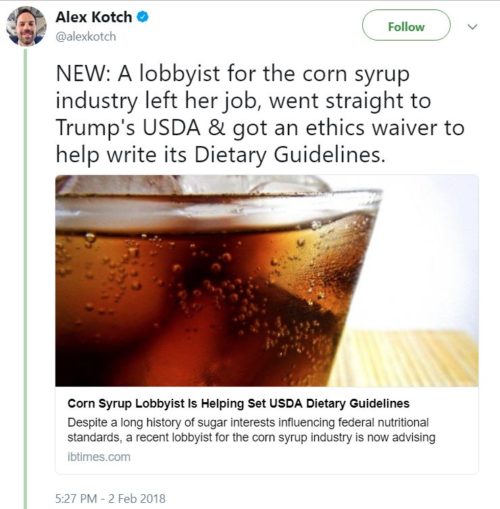Food industry lobbyists running the dietary guidelines?
This tweet certainly got my attention:

It referred to Alex Kotch’s article in the International Business Times about how White House lawyer Donald McGahn has granted a waiver of conflict of interest rules to allow Kailee Tkacz, a former lobbyist for the Snack Food Association and, more recently, for the Corn Refiners Association, to advise the USDA about the forthcoming 2020 dietary guidelines.
Ms. Tkacz also was food policy director for the Corn Refiners Association, which represents producers of high fructose corn syrup (HFCS).
McGahn explained that this waiver would allow Ms. Tkacz “to advise the Secretary of Agriculture and other senior Department officials with respect to the Dietary Guidelines for Americans process.”
He says “it is in the public interest to grant this limited waiver because of Ms. Tkacz’s expertise in the process by which the Dietary Guidelines for Americans are issued every five years.”
The dietary guidelines historically have issued recommendations to consume less salt and sugar. Snack foods are major sources of salt in U.S. diets. Soft drinks sweetened with HFCS are major sources of sugars.
USDA is the lead agency for the 2020 guidelines.
Want to make some bets on what they will say about salt and sugar (a wild guess: the science isn’t firm enough to suggest eating less of either).



